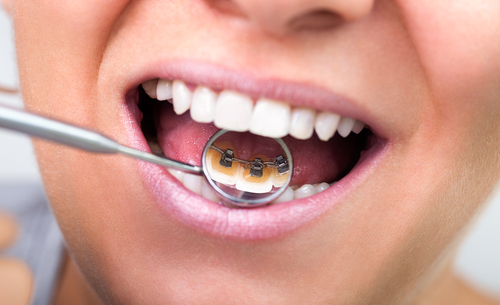Resource Library
Start Reading

Nothing in life can replace a beautiful smile. At Penn Dental Family Practice, we’re committed to helping each of our patients reach their cosmetic dentistry goals and attain results for lasting dental health.
Are you exploring the options in orthodontics? You may have heard of invisible braces, but what about the invisible braces alternatives? Here, we present the best treatments available in orthodontics today.
Before we start discussing the invisible braces alternatives, it is helpful to describe how invisible braces works. Invisible braces are an evidence-based orthodontics treatment option that begins with a precise digital scan. Your dentist will use this scan to design your treatment using a series of customized aligner trays. If you’ve ever wished for removable braces, then invisible braces are your ideal orthodontic treatment. The clear plastic aligners remain in your mouth for between 20-22 hours daily and should be removed when eating and drinking liquids other than water. You will receive a new pair of invisible braces every two weeks, with each successive pair gradually moving your teeth into the desired position. Patients enjoy invisible braces for its benefits, which include:
Perhaps you’re already familiar with invisible braces and, but you wish to pursue a different treatment option. Here are three other evidence-based orthodontic treatments that will get you the same tooth-straightening results as invisible braces through different means.
 The most familiar alternative to invisible braces is traditional orthodontics, or braces. Braces offer a time-tested method to achieving straight teeth. Whether you arrive at the orthodontist’s office with alignment problems or crooked, gapped, or overcrowded teeth, traditional braces will take you to where you need to be. And technological advancements in the field of orthodontics have only made the treatment even more precise.
The most familiar alternative to invisible braces is traditional orthodontics, or braces. Braces offer a time-tested method to achieving straight teeth. Whether you arrive at the orthodontist’s office with alignment problems or crooked, gapped, or overcrowded teeth, traditional braces will take you to where you need to be. And technological advancements in the field of orthodontics have only made the treatment even more precise.
Using the same orthodontic model as traditional braces, ceramic braces are made of a transparent ceramic material. Not everyone can take advantage of this option, as ceramic braces cannot address severe misalignment. It’s necessary to be evaluated by an orthodontist before being approved for ceramic braces.
Lingual braces share characteristics with invisible braces and traditional braces while providing a distinct treatment option. Lingual braces were originally developed with athletes and some musicians in mind, as traditional braces can unfortunately pose difficulties for these activities.
Like invisible braces, lingual braces offer an “invisible braces” approach. Like traditional braces, they use the same system of wires, brackets, and bands and take the same amount of time for treatment. The con of lingual braces is that they can be more difficult to clean and some patients have trouble overcoming a lisp when speaking.
There are advantages and disadvantages to each orthodontic treatment method, but the most important thing to remember is to seek orthodontic treatment with a licensed dentist, preferably one who is a board-certified orthodontist. At Penn Dental Family Practice, you’ll receive high-quality orthodontic care from some of the best providers in the region. You’ll be treated by specialists who are teaching the next generation of orthodontists at the University of Pennsylvania School of Dental Medicine.
To discover which invisible braces alternative is right for you, receive an individual evaluation from a professional orthodontist. To make an appointment to explore your options at Penn Dental Family Practice, please call our offices at 215-898-PDFP(7337).